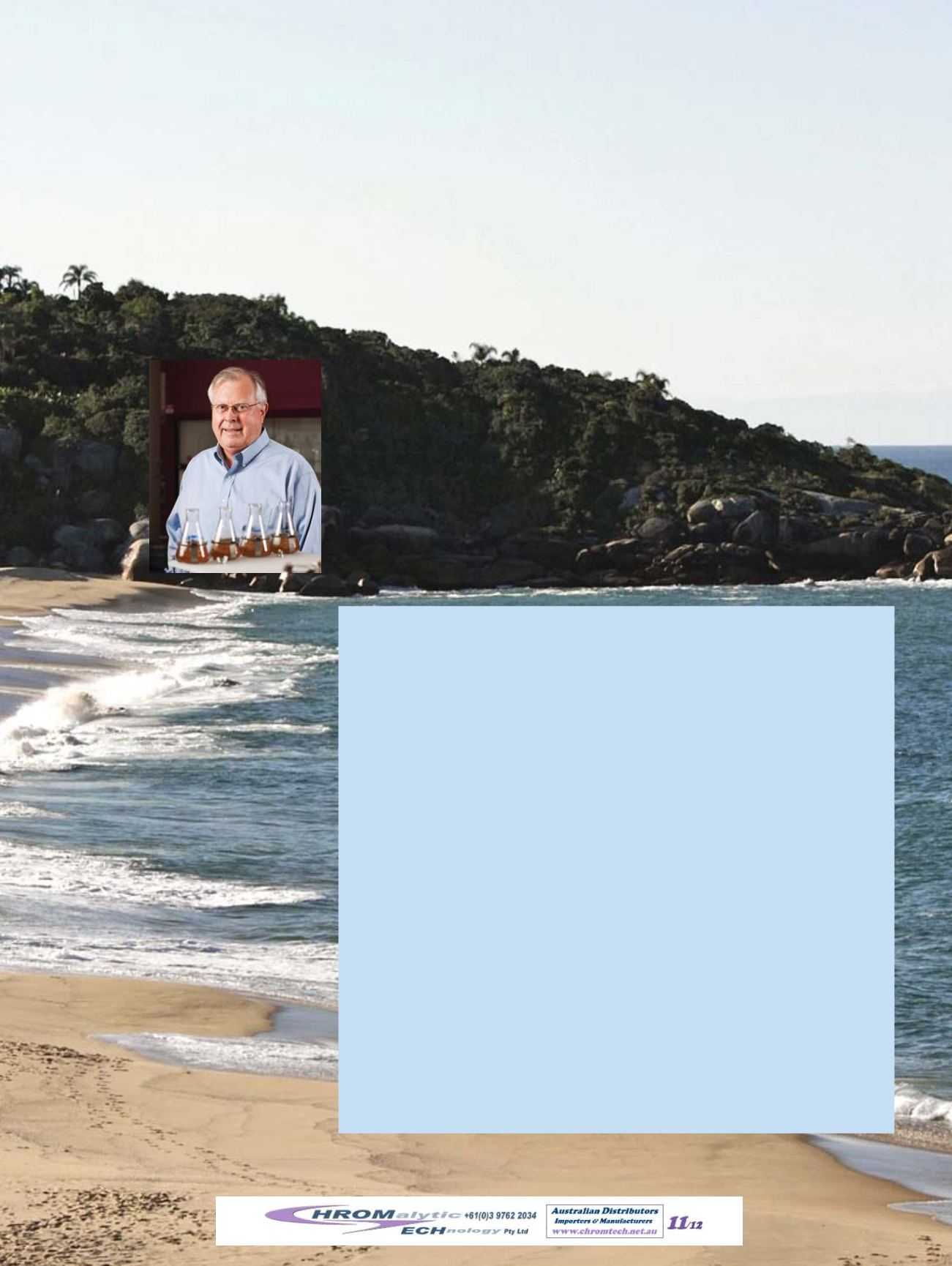

Analytical Chemistry Shapes Response
to the Deepwater Horizon Oil Spill
By Ed Overton, Analytical Specialists, Inc.
The Deepwater Horizon oil spill was an
unprecedented event in the annals of US
petroleum exploration and development.
Much has been made about the compari-
son to the tragic 1989 Exxon® Valdez spill.
Both the current spill and the Alaskan inci-
dent are examples of spills that should not
have happened and, when all details are
known, could have been avoided with
more attention to best operational prac-
tices and standard safe operating proce-
dures. However, both did occur and we are
now faced with trying to mitigate the
effects of another major oil spill.
The Exxon® Valdez incident involved the
loss of 11,000,000 gallons of oil fairly quick-
ly into the cold waters of Prince William
Sound from a floating vessel in close prox-
imity to land. The oil quickly impacted the
western islands and shoreline of the sound,
and most of the response effort after the
first few weeks involved activities to clean
these rocky beaches. In the Deepwater
Horizon spill, oil was entering the environ-
ment at a slower pace, approximately
Ed Overton
developed the microFAST GC and is the
founder of Analytical Specialists, Inc. (ASI). He currently is the
principal investigator on a grant to provide NOAA's Office of Response
and Restoration with chemical hazard assessments for oil and hazardous chemical
spills within US jurisdiction. Prior to retiring in May 2009, Ed held the Claiborne
Chair in Environmental Toxicology and Air Quality, an endowed professorship at
Louisianna State University.
2,300,000 gallons per day. However, the
input was from a leak 1 mile below the Gulf’s
surface, 50 miles from the closest land, and
considerably farther from most shorelines.
Unfortunately, the shoreline types most vul-
nerable to damage fromoil spills are marshy,
grassy shorelines, like the mostly marshy
Louisiana shoreline which represents the
open water-land interface for some 40% of
our nation’s wetlands. Additional coastal
marshes were in harm’s way along the coasts
of Mississippi, Alabama, and Florida.
The Deepwater Horizon spill was a slow
moving spill that continued for 87 days and
dumped over 200,000,000 gallons of a very
volatile, light sweet crude oil into the waters
of the Gulf of Mexico. Fresh oil reached the
surface each day, and it appears that the oil
was mixing with water as it ascended from
the depths, stripping mostly aromatic com-
pounds from small droplets. Surface oil
formed a water-in-oil emulsion, a mousse,
that floated in the water at the surface. Most
of the volatile components readily evaporat-
Innovators in Chromatography
A continuing series of guest editorials contributed by collaborators and internationally recognized leaders in chromatography.
18
www.restek.comWebsite :
www.chromtech.net.auE-mail :
info@chromtech.net.auTelNo : 03 9762 2034 . . . in AUSTRALIA











